Closer To The Heart
At home with Rush singer Geddy Lee talking baseball, wine and the art of enduring
By Philip Wilding, HOSS (Homeowner's Simple Solutions), November/December 2015, transcribed by John Patuto

Thirty-five sold-out shows later and Rush's R40 tour of North America is finally done.
Though the iconic band's lead singer, Geddy Lee, is not one to rest on his laurels, after three months on the road, anyone would need some me-time. Once the final encore was played at the tour's last stop in L.A last August, Lee headed to his lakeside home in Ontario's cottage country.
"I needed to decompress after the tour," he says. But not for long. No sooner had he wrapped up his cottage stay, than he and his wife, Nancy Young, were planning a trip to walk along the historic Hadrian's Wall; a week-long trek over some unforgiving if breath-taking terrain in northern England. Afterwards, the couple would spend some time in their London apartment. This is where I caught up with him earlier this fall to talk about art, his charity work and life off the road.
Collecting passions
Lee stays busy in ways that might surprise you. While some of his collections are well documented, not everyone knows that he and Nancy have an extensive art collection in their three homes. He's also an avid collector of vintage bass guitars - he played 25 different guitars during the band's three-hour set on this last tour - some of which line the wall in his home studio.
And there's a room in his Toronto home dedicated exclusively to his baseball memorabilia collection. (He's an ardent Toronto Blue Jays fan and even stepped onto the field to throw the first pitch at the team's opening game back in 2013.) "I'm a borderline hoarder, really," he says, only half-jokingly. "It's a dangerous gene. We talk about it all the time. We call it the collector's gene. I do think there's a thing to it."
His passions have a life beyond his collections, too. Wine and baseball both play a big part in his life and he's managed to combine these interests with his charity work. In 2008, he donated almost 400 signed baseballs from his personal collection - all of them autographed by former Negro League baseball players - to the Negro Leagues Baseball Museum in Kansas City. He's also an active board member with Grapes for Humanity Canada, a charitable organization that works with the international wine community to raise funds benefitting humanitarian causes around the world.

Where the heart is
When it comes to house and home, the London apartment I visited recalls Lee's Toronto home; dark wood, elegant furnishings, art and photography adorning the walls, while the kitchen is state of the art with cubes of gleaming stainless steel abutting hard wood. Canada is represented here in the UK too, with St. Catharines' photographer Edward Burtynsky's commanding portrait of an Indian ship breaker's yard hanging on one wall. Across from that hangs an original painting by acclaimed young artist, Stephen Appleby-Barr.
Lee says his criteria for buying art is simple: it has to move both him and Nancy. "To me, art is just pleasure, and when my wife and I find a piece that brightens our lives or makes us happy in some way, then we buy it."
Picture perfect
At first, Lee's interest in art was piqued by photographers such as Andre Kertesz, Paul Strandand Alfred Stieglitz. "There was a time when I was very tempted to get into serious photography collecting, he says, "but the more I found about it the less it appealed to me because there are so many print variations of the image that it started to bother me."
The fine art of collecting
Lee shifted his gaze towards fine art, and nurtured this early interest on a U.S tour with RUSH in the late '80s.
"It didn't matter what city I was in, I would go to an art gallery. What kept me sane on that tour was learning about art, he says.

"You can learn a lot by buying the books and going to every gallery you can and seeing what they have there - letting your eyes take it all in.
"That's how I fell in love with the German expressionist painters. Nancy and I got caught up when we saw one for sale in a Christie's auction. It was a minor piece by an artist that I like called Alexei von Jawlensky.
"He was part of this group called the Der Blaue Reiter or the Blue Riders, which I guess it sounds like a biker gang. They used very intense colours, and painted very bold, emotional paintings. And he did these fantastic portraits. This was a still life, and we bought it for what we thought was a pretty reasonable price and we still have it. And then we realized that we didn't really have the stomach for this high price art world and so we tend to not buy those big important pieces unless one falls in our lap."
For the love of art
These days, that gut reaction he describes is the way forward for the couple; collecting is based on instinct and emotion rather than investment buying. It really is art for art's sake. As an example, he pointed to a pair of striking portraits of two cockatoos that help frame one wall in his London apartment. They're easy to love.
"That's an Australian photographer called Leila Jeffreys and we saw them when we were on holiday in Sydney. We looked in the window and there were these magnificent birds, and I'm a birdwatcher. And for some reason we never got them. A friend sent me a picture of them later, quite unrelated, and said, 'don't you love these'? And it turned out that Leila Jeffreys has representation here in London and we got those two. The more you look at them the more you love them. They make you happy."
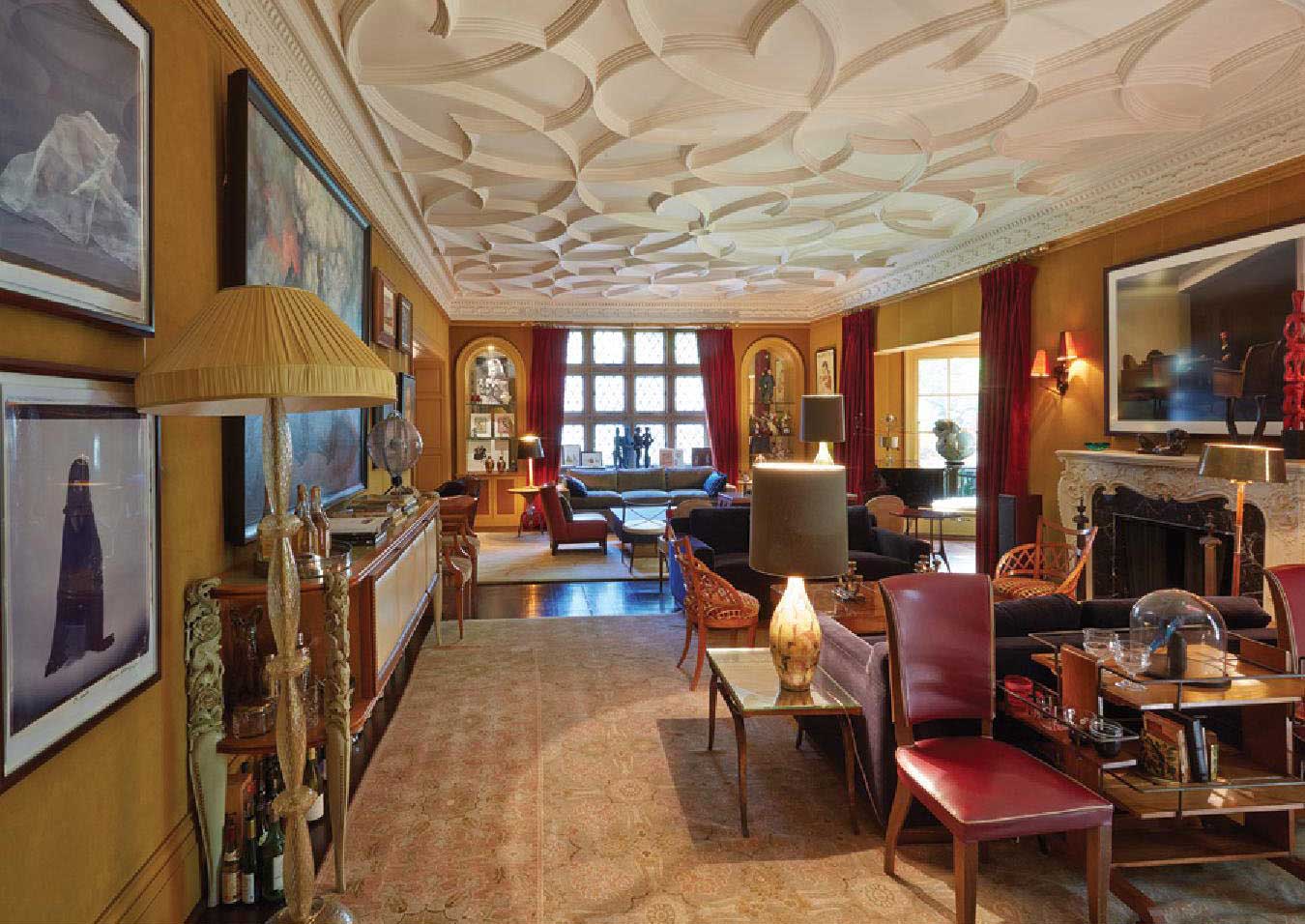
Happy and curious. Ultimately art, like his beloved baseball, acts as a window on to another, sometimes unseen, world.
"I got into baseball ephemera because I love the game. And then I found that something like a ball signed in 1917 made me want to look at 1917 America. I think art is the same. Whatever artist you become enamoured with, you absorb his life and times, the story behind that existence.
"Case in point, I'm a child of the 50s, so I have great respect for the artists that came in the early part of the 20th century and survived the war. And their art survived too and has gone on to become important. I think that's why I'm fascinated by that period of history to a certain extent. They and their work endured. Art goes on and touches us and our history."
And though he'd never say it (even after an electrifying and sold out North American tour and a life spent creating and playing music) Lee's own work has touched generations and made its own unique mark on history. Just like the art he loves, his work too is still echoing down through the ages.
Though the iconic band's lead singer, Geddy Lee, is not one to rest on his laurels, after three months on the road, anyone would need some me-time. Once the final encore was played at the tour's last stop in L.A last August, Lee headed to his lakeside home in Ontario's cottage country.
"I needed to decompress after the tour," he says. But not for long. No sooner had he wrapped up his cottage stay, than he and his wife, Nancy Young, were planning a trip to walk along the historic Hadrian's Wall; a week-long trek over some unforgiving if breath-taking terrain in northern England. Afterwards, the couple would spend some time in their London apartment. This is where I caught up with him earlier this fall to talk about art, his charity work and life off the road.
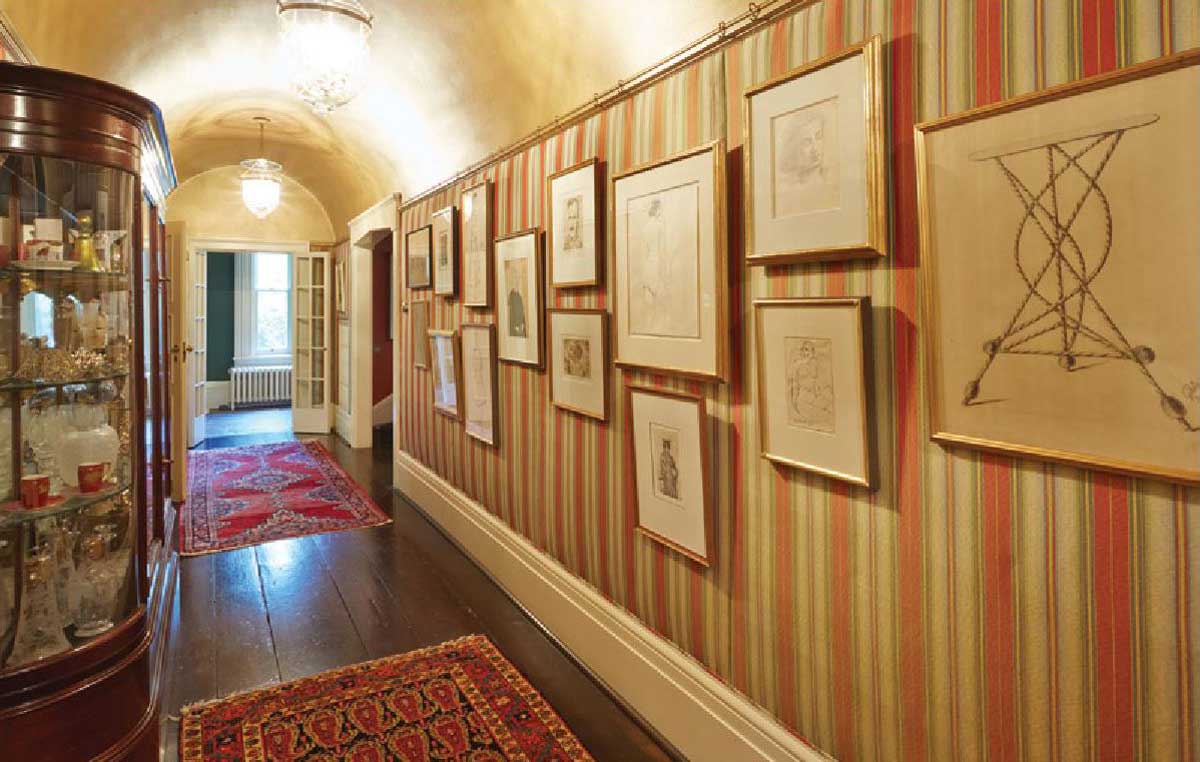
Collecting passions
Lee stays busy in ways that might surprise you. While some of his collections are well documented, not everyone knows that he and Nancy have an extensive art collection in their three homes. He's also an avid collector of vintage bass guitars - he played 25 different guitars during the band's three-hour set on this last tour - some of which line the wall in his home studio.
And there's a room in his Toronto home dedicated exclusively to his baseball memorabilia collection. (He's an ardent Toronto Blue Jays fan and even stepped onto the field to throw the first pitch at the team's opening game back in 2013.) "I'm a borderline hoarder, really," he says, only half-jokingly. "It's a dangerous gene. We talk about it all the time. We call it the collector's gene. I do think there's a thing to it."
His passions have a life beyond his collections, too. Wine and baseball both play a big part in his life and he's managed to combine these interests with his charity work. In 2008, he donated almost 400 signed baseballs from his personal collection - all of them autographed by former Negro League baseball players - to the Negro Leagues Baseball Museum in Kansas City. He's also an active board member with Grapes for Humanity Canada, a charitable organization that works with the international wine community to raise funds benefitting humanitarian causes around the world.
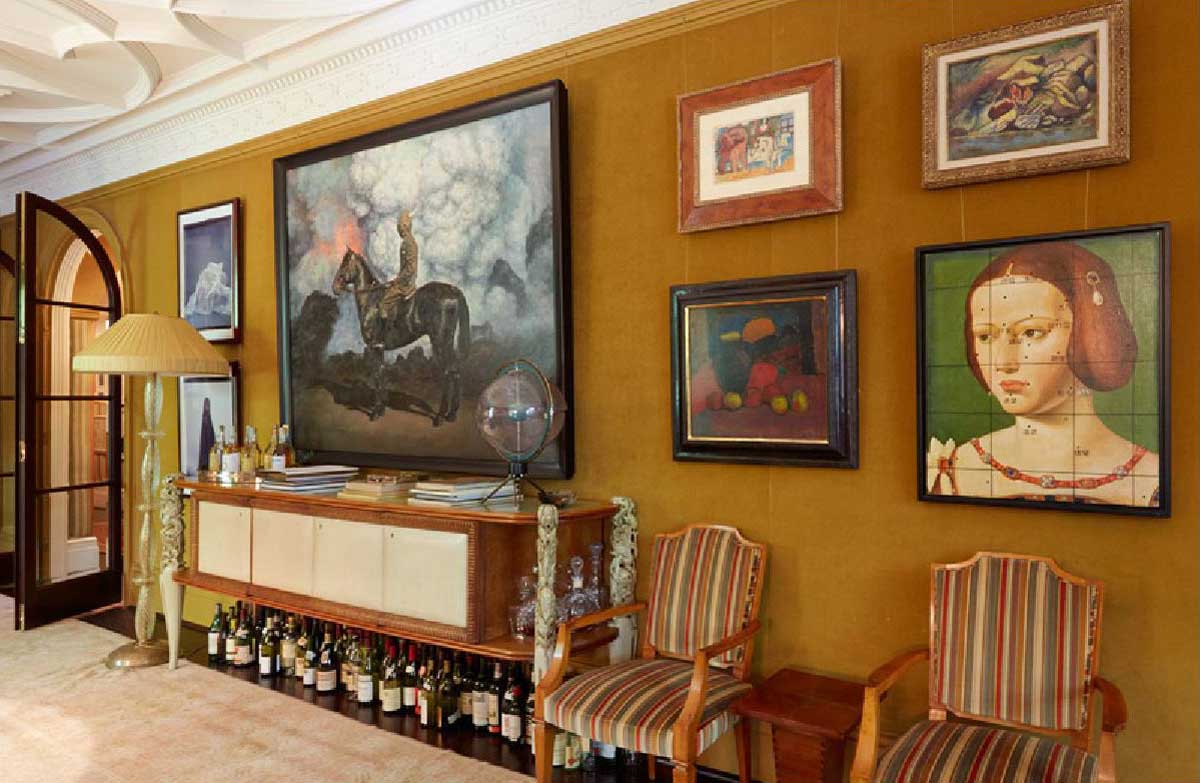
Where the heart is
When it comes to house and home, the London apartment I visited recalls Lee's Toronto home; dark wood, elegant furnishings, art and photography adorning the walls, while the kitchen is state of the art with cubes of gleaming stainless steel abutting hard wood. Canada is represented here in the UK too, with St. Catharines' photographer Edward Burtynsky's commanding portrait of an Indian ship breaker's yard hanging on one wall. Across from that hangs an original painting by acclaimed young artist, Stephen Appleby-Barr.
Lee says his criteria for buying art is simple: it has to move both him and Nancy. "To me, art is just pleasure, and when my wife and I find a piece that brightens our lives or makes us happy in some way, then we buy it."
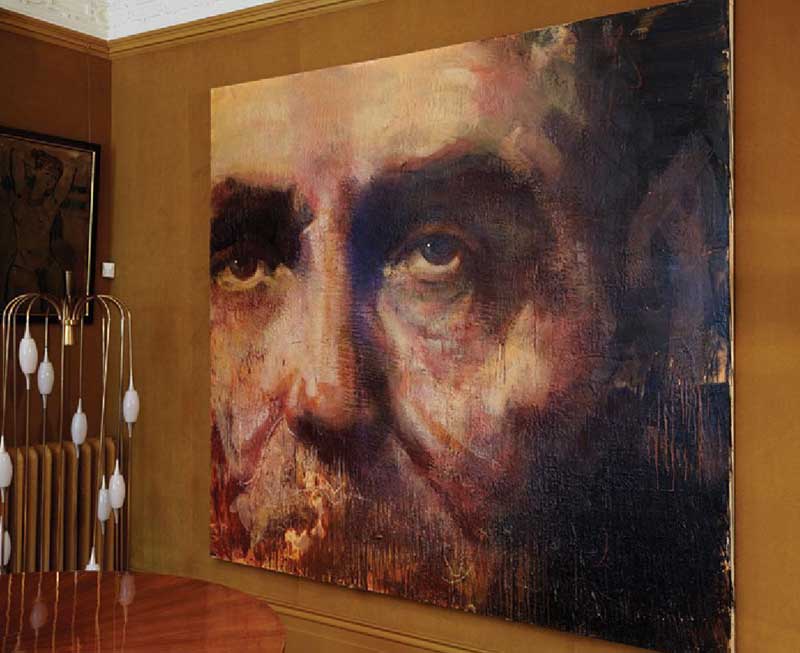
Picture perfect
At first, Lee's interest in art was piqued by photographers such as Andre Kertesz, Paul Strandand Alfred Stieglitz. "There was a time when I was very tempted to get into serious photography collecting, he says, "but the more I found about it the less it appealed to me because there are so many print variations of the image that it started to bother me."
The fine art of collecting
Lee shifted his gaze towards fine art, and nurtured this early interest on a U.S tour with RUSH in the late '80s.
"It didn't matter what city I was in, I would go to an art gallery. What kept me sane on that tour was learning about art, he says.
"You can learn a lot by buying the books and going to every gallery you can and seeing what they have there - letting your eyes take it all in.
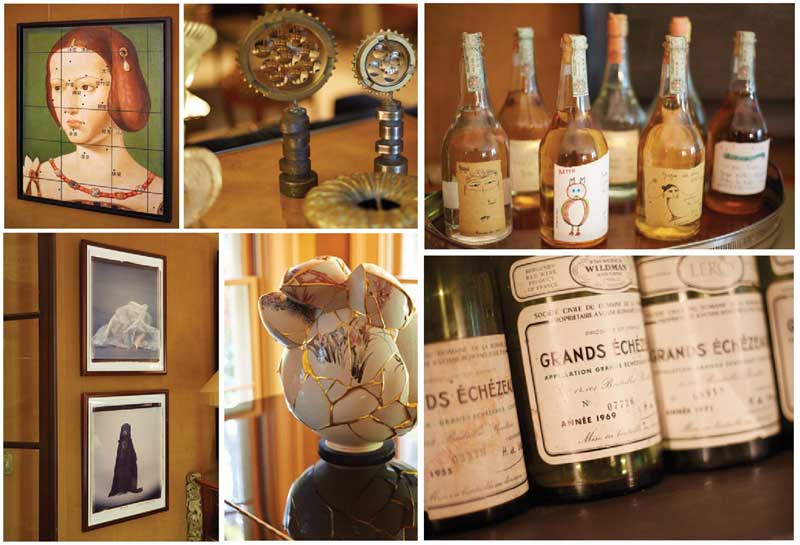
"That's how I fell in love with the German expressionist painters. Nancy and I got caught up when we saw one for sale in a Christie's auction. It was a minor piece by an artist that I like called Alexei von Jawlensky.
"He was part of this group called the Der Blaue Reiter or the Blue Riders, which I guess it sounds like a biker gang. They used very intense colours, and painted very bold, emotional paintings. And he did these fantastic portraits. This was a still life, and we bought it for what we thought was a pretty reasonable price and we still have it. And then we realized that we didn't really have the stomach for this high price art world and so we tend to not buy those big important pieces unless one falls in our lap."
For the love of art
These days, that gut reaction he describes is the way forward for the couple; collecting is based on instinct and emotion rather than investment buying. It really is art for art's sake. As an example, he pointed to a pair of striking portraits of two cockatoos that help frame one wall in his London apartment. They're easy to love.

"That's an Australian photographer called Leila Jeffreys and we saw them when we were on holiday in Sydney. We looked in the window and there were these magnificent birds, and I'm a birdwatcher. And for some reason we never got them. A friend sent me a picture of them later, quite unrelated, and said, 'don't you love these'? And it turned out that Leila Jeffreys has representation here in London and we got those two. The more you look at them the more you love them. They make you happy." Happy and curious. Ultimately art, like his beloved baseball, acts as a window on to another, sometimes unseen, world.
"I got into baseball ephemera because I love the game. And then I found that something like a ball signed in 1917 made me want to look at 1917 America. I think art is the same. Whatever artist you become enamoured with, you absorb his life and times, the story behind that existence.
"Case in point, I'm a child of the 50s, so I have great respect for the artists that came in the early part of the 20th century and survived the war. And their art survived too and has gone on to become important. I think that's why I'm fascinated by that period of history to a certain extent. They and their work endured. Art goes on and touches us and our history."
And though he'd never say it (even after an electrifying and sold out North American tour and a life spent creating and playing music) Lee's own work has touched generations and made its own unique mark on history. Just like the art he loves, his work too is still echoing down through the ages. - H